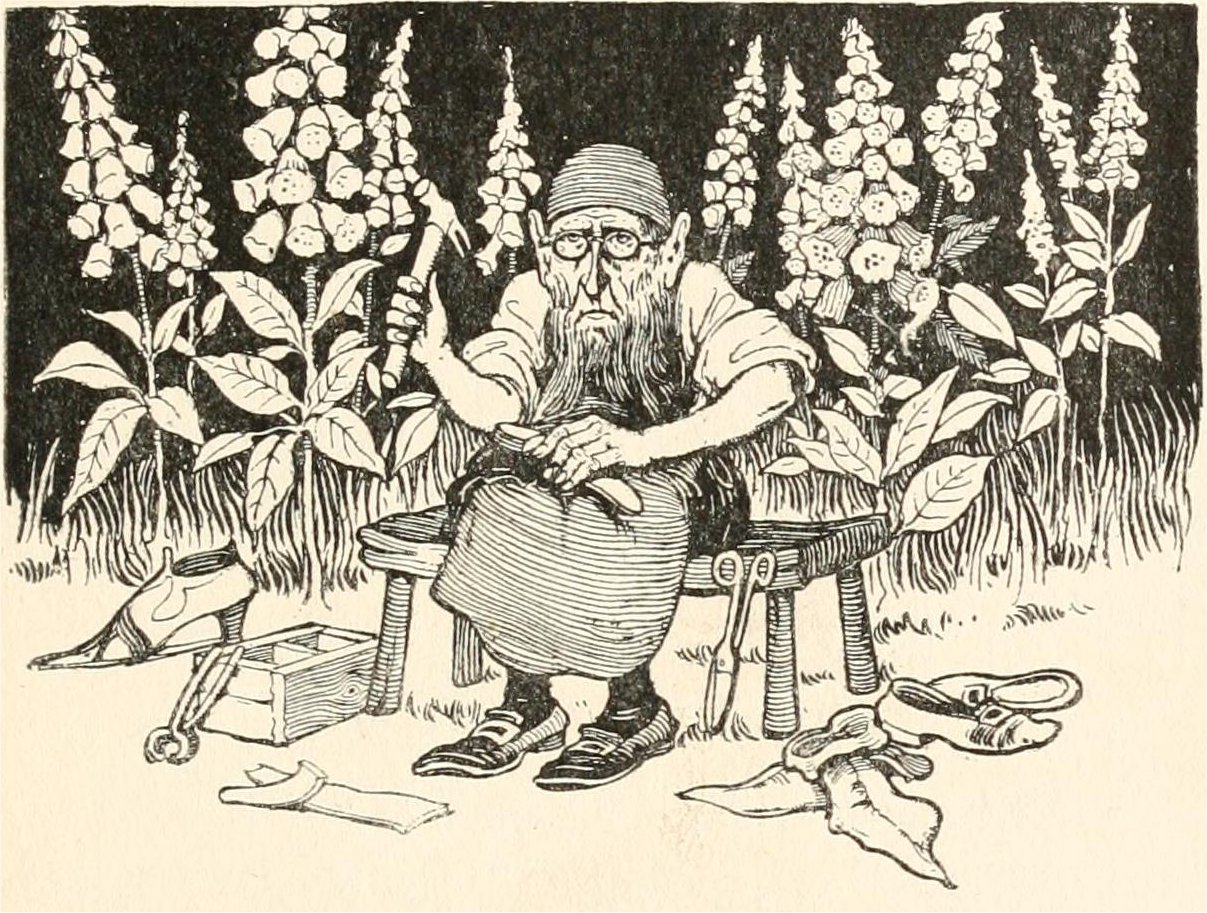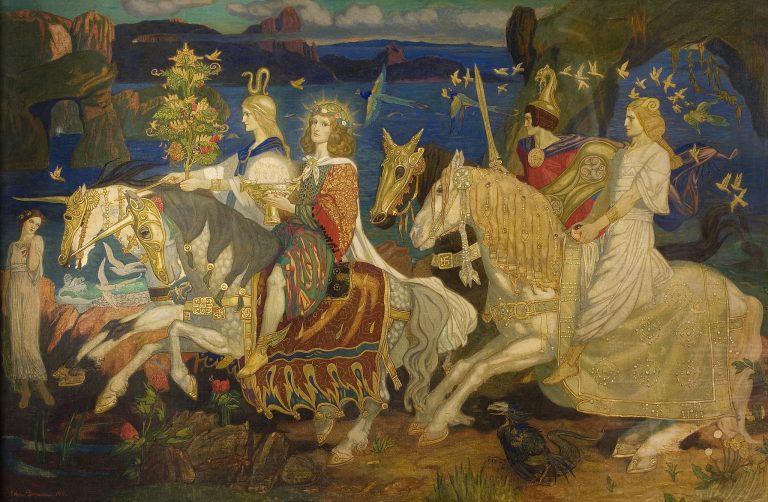With St. Patrick’s Day celebrations coming up, people all over the world, Irish or not, are digging out their greens for the festive occasion. It is said that the mischievous leprechauns, integral to Ireland’s culture and heritage, will pinch you if you don’t! Yet the legendary leprechauns of Ireland had nothing to do with St. Patrick. That they happened to happily come together can be credited to the beloved entertainer and creator of the Magic Kingdom – Walt Disney.
Leprechauns are mythological wee folk native to Ireland, depicted nowadays as small, red-bearded men clad in their best greens. They are known for guarding pots of gold, freewheeling down rainbows, and generally causing trouble. This iconic symbol of Ireland can pop up anywhere, from cereal boxes to toys; from printed matter to movies. What makes this strange little man so enchanting?
The legendary leprechauns of Ireland and their magical history
The oral tradition of Irish storytelling has long been at the heart of the country’s culture, and the legend of the leprechaun is one of the most well-known and enduring stories to have developed in Irish history.
In ancient Ireland, leprechauns were believed to be one of the various occupants of the fairy realm. They were linked with deities such as Dagda and Brighid, as well as Lugh, (pronounced “Luck”) who was both the sun deity and the patron of the arts and crafts.
According to Irish myth, the Tuatha Dé Danann, which translates as “Tribe of the Gods,” were the first inhabitants of Ireland. Following defeat in a battle with an invading Spanish tribe from Iberia, they agreed to live in the underworld. In realms thought to be parallel universes to our own, they were transformed into a variety of magical creatures, including changelings, leprechauns, merrow and selkie; and concealed below the earth’s surface, in mountains, beneath the sea, and on distant islands.
Success
You are now signed up for our newsletter
Success
Check your email to complete sign up
Irish fairy tales are of the oldest in the world and they are compelling and vivid, full of wisdom, wit, and paranormal wonders. Prior to the emergence of modern science, these fairytales contributed to the explanation of the psyche and of life occurrences in a supernatural manner.

The name Leprechaun is believed to have come from the word “luchorpán,” meaning ‘small body’ and referring to underwater sprites. As described in the Celtic legend The Saga of Fergus mac Léti, recorded in the 8th century, Ulster’s king Fergus caught the small creatures after they played a trick on him, and would only release them if they granted him three wishes. The wishes were granted, including the power to breathe underwater, with the notable exception of the Loch Rudraige.
Being obstinate, Fergus dismissed the prohibition and tried the Loch Rudraige anyway. There, he encountered the huge and ghastly sea monster Muirdris, and escaped to land; but he suffered such a jarring deformation that he was deemed no longer suitable to be king.
The luchorpán included females as well, who were especially interested in seducing males away for secret excursions.
Only male leprechauns remained by 1825, and they were reported to dwell in rural areas and make shoes and leather boots. Perhaps they landed their trade from the fact that “luchorpán” sounds similar to the old term “’leath bhrogan,” meaning “one shoemaker.” In any case, the humbling occupation must be a lucrative business in the fairy world, as the little men are known to accumulate wealth. Each supposedly has a pot of gold stowed away at end of the rainbow. His constant hammering proclaims his presence.
Leprechauns in literature
Oddly enough, leprechauns before the 20th century were often depicted in red, although their appearance varied somewhat depending on location. In 1831, Samuel Lover described the leprechaun as “…quite a beau in his dress, notwithstanding, for he wears a red square-cut coat, richly laced with gold…” In his Legends and Stories of Ireland, the Irish novelist tells that they were most frequently seen working on a single shoe rather than a pair of shoes.
The Irish poet W.B. Yeats, also described leprechauns as wearing red jackets.
“Lay your ear close to the hill.
Do you not catch the tiny clamor,
Busy click of an elfin hammer,
Voice of the Leprechaun singing shrill
As he merrily plies his trade?”
Yeats
In his 1820s Fairy Traditions and Legends of the South of Ireland, however, T. Crofton Croker describes these mythical entities as “bearded old men dressed in green and wearing buckled shoes. Sometimes they wear a pointed cap or hat and may smoke a pipe.”

Leprechaun: the fairy trickster
By the 1800s, the popular opinion was that leprechauns were both rich and wise; so in folklore, the wee folks were shown to be very protective of their money. Rumor has it that people who capture leprechauns run the risk of insanity if their three wishes don’t come true. Leprechauns are are well-known for outwitting mortals in their chase for fairy gold.
In Crofton Croker’s The Field of Boliauns (1925), farmer Tom Fitzpatrick catches a leprechaun. The leprechaun leads him to the spot where his crock of gold is buried beneath a tree. Lacking a shovel, Tom drapes a scarlet cloth around the tree, making the leprechaun promise not to remove it. When he returns, the leprechaun has vanished and crimson rags are attached to every tree.
Knowing it was senseless to think of digging up the entire field, which covered over forty excellent Irish acres, Tom returned home with his spade, cursing the Leprechaun for the cunning trick he had played on him.
Some say that a leprechaun always keeps two leather pouches in his possession. He has a silver shilling in one of his pouches, and every time he gives it out, it returns to his bag. The second pouch contains a gold coin, which, when taken by a mortal captor, is said to decompose into leaves or ashes directly after the leprechaun has been released.
However, certain traditions claim that if a leprechaun is moved by compassion, he will loosen his grip on his purse strings.
Always getting chased for one’s riches might be exhausting even for a fairy. One story tells of a destitute nobleman who gave a weary leprechaun a ride on his horse. When the gentleman returned to his crumbling castle, he found it had been transformed into a palace filled to the ceiling with gold!
How the leprechaun leapt into St. Patrick’s day
How the leprechaun became associated with St. Patrick’s day may seem a bit puzzling, as this mythical creature has no ties to the Catholic faith. Why does St. Patrick’s Day bring out the leprechaun in everyone?

A likely explanation for this unlikely relationship is Walt Disney’s Darby O’Gill and the Little People, a film based in Ireland about an old man and his encounters with leprechauns. The film was released in the 1950s, just as St. Patrick’s Day parades were gaining popularity in the U.S. Since the two were both heavily linked to Irish culture, the largely American audience of the film attached the magical fairy to the festivities, and thus the leprechaun became a symbol of St. Patrick’s Day.
Another plausible connection is the shamrock. Recognized as a symbol of luck in Ireland, it is naturally closely linked with the lucky leprechaun. At the same time, Saint Patrick is said to have used the three-leaved plant to explain the Holy Trinity and spread Christianity in Ireland. Irish Christians wore them to church, and soon the plant became the national symbol of Ireland.
Visit us again next week to find out about Saint Patrick.
Ila Bonczek contributed to this report.















